CAA News Today
Recent Deaths in the Arts
posted by Christopher Howard — December 27, 2013
In its regular roundup of obituaries, CAA recognizes the lives and achievements of the following artists, historians, curators, dealers, collectors, and others whose work has significantly influenced the visual arts. Notable deaths in fall 2013 include the artist Anthony Caro, the photographer Saul Leiter, the philosopher and critic Arthur C. Danto, and the scholar and curator Karin Higa.
- Kirk Alexander, an art historian, civil engineer, and educational-technology expert who worked at Princeton University and the University of California, Berkeley, died on October 1, 2013. He was 63
- Charles Cajori, an artist who was part of the second generation of Abstract Expressionists in New York, passed away on December 1, 2013, at the age of 92
- Anthony Caro, a British modernist artist who created colorful, welded steel sculptures, died on October 23, 2013. He was 89 years old
- Arthur C. Danto, a philosopher and art critic who taught at Columbia University and wrote for the Nation, died on October 25, 2013, at age 89
- Wanda Ewing, an artist, printmaker, and associate professor of art at the University of Nebraska, died on December 8, 2013. CAA has published a special obituary for Ewing, who was a member of CAA’s Committee on Women in the Arts, written by Maria Elena Buszek
- Günther Förg, a German artist who worked in painting, sculpture, and photography commented on modernism, died on December 5, 2013. He was 61
- Michael Harvey, a pioneer in the craft of lettering and the development of typefaces, died on October 18, 2013, at the age of 81
- Karin Higa, a scholar of Asian American art and a curator for the Japanese American National Museum in Los Angeles, passed away on October 29, 2013. She was 47. Higa had been a member of the editorial board for Art Journal, which has published a series of remembrances
- Jenny Hoon, a lecturer on textile design at the Derby School of Art (now the University of Derby) for many years, died on October 15, 2013, at age 79. She also served as an administrator and examiner for numerous schools
- Saul Leiter, a pioneering photographer of images using color film, died on November 26, 2013. He was 89 years old
- Georgina Livingston, an English landscape architect whose projects included the visitor’s center at Stonehenge and the Cambridge University Centre for Mathematical Sciences, died in October 2013. She was 72
- Brian MacDermot, a London stockbroker who became a dealer of nineteenth-century Orientalist painting, died on September 12, 2013, age 82
- Gridley McKim-Smith, an art historian who specialized in seventeenth-century Spanish art and a longtime professor at Bryn Mawr College, passed away on October 19, 2013. She was 70 years old
- Samuel Clifford Miller, director of the Newark Museum from 1968 to 1993, died on November 7, 2013, at the age of 83
- José Esteban Muñoz, a queer theorist and a professor in the Tisch School of the Arts at New York University, died on December 4, 2013. He was 46 years old
- Hajime Nakatani, a professor of East Asian art history who worked in Canada and Japan, died in June 2013. He was 46
- George Ortiz, a French collector of antiquities from Sumer, Babylon, Egypt, and Greece, passed away on October 8, 2013. He was 86
- George Rodrigue, a New Orleans–based artist beloved for his paintings of the Blue Dog, died on December 14, 2013. He was 69
- Leslie Sacks, a Californian art dealer with galleries at Bergamot Station in Santa Monica and in Brentwood, died in October 2013. She was 61 years old
- Àngeles Santos, a Catalan artist who was often called the Spanish Rimbaud, died on October 3, 2013. She was 101 years old
- Martin Sharp, a psychedelic artist who designed album covers in the late 1960s and who founded Oz magazine, died on December 1, 2013, age 71
- Michael Sullivan, a historian of Chinese art who taught at Stanford University from 1966 to 1984, died on September 28, 2013. He was 96
- Deborah Turbeville, a fashion photographer and a contemporary of Helmut Newton and Guy Bourdin whose images appeared in Vogue and Harper’s Bazaar, died on October 24, 2013. She was 81 years old
- David Vestal, a photographer and professor at Parsons School of Design, the School of Visual Arts, and Pratt Institute, died on December 4, 2013. Born in 1924, he received two John Simon Guggenheim Fellowships in photography in 1966 and 1973
- Ian White, an artist, curator, and writer who performed his works at Tate Britain, Tate Modern, and the Institute for Contemporary Arts in London, died on October 26, 2013, at the age of 41
- Victor Zamudio-Taylor, a Mexican curator, art advisor, and promoter of contemporary art, has died. Born in 1956, he was once a Rockefeller Foundation senior associate researcher at the National Museum of American Art and the Archives of American Art
Read all past obituaries in the arts in CAA News, which include special texts written for CAA. Please send links to published obituaries, or your completed texts, to Christopher Howard, CAA managing editor, for the next list.
News from the Art and Academic Worlds
posted by Christopher Howard — December 25, 2013
Each week CAA News publishes summaries of eight articles, published around the web, that CAA members may find interesting and useful in their professional and creative lives.
The World’s Most Famous Missing Painting
Vincenzo Peruggia was not the kind of criminal mastermind that makes up the majority of art thieves in Hollywood films. He was not a genius cat burglar. He managed to walk into the Louvre in Paris and walk out with the Leonardo painting after minimal preparation. But his theft created a sensation. (Read more from BBC News.)
Understanding Wood Supports for Art: A Brief History
Historically, wood panels were used for paintings long before the adoption of flexible fabric supports. Most of the earliest icons still intact from the second and third century as well as a large portion of the Renaissance paintings were created on solid wood panels. Many of Raphael’s paintings, for example, are painted on primed wood panels. The method for preparing the panels was laborious as the solid wood was first dried well and sanded very smooth. It was then covered with layers of ground made by mixing gypsum (pounded into powder) with hide glue made from animal skins. The panel was then sanded and burnished until it was smooth and ready for painting. (Read more from Just Paint.)
Academic Freedom and Electronic Communications
This report brings up to date and expands upon the association’s 2004 report, Academic Freedom and Electronic Communications. It reaffirms that report’s overriding principle: “Academic freedom, free inquiry, and freedom of expression within the academic community may be limited to no greater extent in electronic format than they are in print, save for the most unusual situation where the very nature of the medium itself might warrant unusual restrictions.” (Read more from the American Association of University Professors.)
The British Library Puts One Million Images into the Public Domain, Making Them Free to Reuse and Remix
Earlier this week, Oxford’s Bodleian Library announced that it had digitized a 550-year old copy of the Gutenberg Bible along with a number of other ancient bibles, some of them quite beautiful. Not to be outdone, the British Library came out with its own announcement on Thursday: “We have released over a million images onto Flickr Commons for anyone to use, remix and repurpose. These images were taken from the pages of 17th, 18th and 19th century books digitised by Microsoft who then generously gifted the scanned images to us, allowing us to release them back into the Public Domain.” (Read more from Open Culture.)
Fakers, Fakes, and Fake Fakers
Many years ago, I interviewed a forger named David Stein. He had been arrested for faking hundreds of drawings, gouaches, and watercolors by Matisse, Chagall, Picasso, Cézanne, Degas, Miró, and many others. One day, while he was out on bail, I asked him how an art forger creates works by well-known artists whose styles are so different. “The first thing you have to do is know intimately the artist you are imitating, not only to know him but also to like him, to love his art,” Stein said. (Read more from ARTnews.)
Job Placement Confusion
With tuition prices continuing to rise and greater numbers of graduates struggling in the job market, families, students and policy makers—most visibly President Obama—are increasingly questioning the “value” that colleges are providing. In response to that mounting pressure, more colleges and universities are turning to alumni outcome surveys. (Read more from Inside Higher Ed.)
How to Score That Elusive Spousal Hire
The spousal/couple/dual-career search is, hands down, the most stressful kind of academic job search there is. And I know this viscerally, because I had an ex-husband with a PhD—in a different humanities field, but still—and can still remember the sick feeling in my stomach, the cold sweats late at night, the gut-wrenching anxiety as I contemplated just how in god’s name we were going to get both of us gainfully employed on the tenure track. (Read more from Vitae.)
Need for Leaders at DC Arts Institutions Could Be a Golden Opportunity or a Squandered One
The Kennedy Center recently announced that Deborah Rutter of the Chicago Symphony Orchestra Association will become its new president, but many high-profile Washington cultural and arts institutions are still searching for new leaders to fill their top posts. The Smithsonian Institution announced in October that its secretary, Wayne Clough, would be stepping down next year, and Richard Koshalek, the former director of the Hirshhorn Museum and Sculpture Garden, resigned in May after the demise of his seasonal inflatable structure project. (Read more from the Washington Post.)
LACMA Resurrects Art and Technology Program, Teams with Google
More than forty-five years ago, the Los Angeles County Museum of Art created an experimental program to bring artists and technology companies together in the hopes of inspiring innovative thinking in the visual arts. Earlier this month museum announced that it is resurrecting the program in the form of a laboratory and has partnered with companies including Google and SpaceX. (Read more from the Los Angeles Times.)
Solo Exhibitions by Artist Members
posted by CAA — December 22, 2013
See when and where CAA members are exhibiting their art, and view images of their work.
Solo Exhibitions by Artist Members is published every two months: in February, April, June, August, October, and December. To learn more about submitting a listing, please follow the instructions on the main Member News page.
December 2013
Abroad
Sue Johnson. Salisbury and South Wiltshire Museum, Salisbury, England, February 1–May 10, 2014. Pitt Rivers: Collecting Patterns. Painting and printmaking.
Mid-Atlantic
Peter Dueker. Outer Space, Washington, DC, October 5–26, 2013. 19 Hot Biscuits. Photography.
Midwest
Michelle Grabner. Museum of Contemporary Art, Cleveland, Ohio, November 1, 2013–February 16, 2014. I Work from Home. Painting, printmaking, video, and sculpture.
Michelle Handelman. Eli and Edythe Broad Art Museum, Michigan State University, East Lansing, Michigan, September 20, 2013–March 30, 2014. Irma Vep, the last breath. Multichannel video installation.
Amy Reidel. Meramec Contemporary Art Gallery, Saint Louis Community College, Saint Louis, Missouri, October 3–25, 2013. Relic-quarry: New Work by Amy Reidel. Painting, installation, collage, and video.
Northeast
Michele Brody. Casa Frela, New York, November 9–December 9, 2013. Harlem Roots. Environmental installation.
Sharon Louden. Morgan Lehman Gallery, New York, October 24–December 7, 2014. Community. Sculpture and video.
Josette Urso. Anthony Giordano Gallery, Dowling College, Oakdale, New York, September 4–October 12, 2013. Multiple Choice.
Michael Velliquette. DCKT, New York, October 25–December 8, 2013. Their Arising and Passing Away. Sculptural cut-paper construction.
South
Kyra Bélan. Fine Arts Gallery, Cape Coral Arts Studio, Cape Coral, Florida, December 6–26, 2013. Painting and text.
Kyra Bélan. Member Gallery, Alliance for the Arts, Fort Meyers, Florida, December 6–28, 2013. Painting, drawing, digital media, and mixed media.
Blane De St. Croix. Blue Star Contemporary Art Museum, San Antonio, Texas, December 5, 2013–February 16, 2014. Broken Landscapes III. Sculpture.
Sue Johnson. Eleanor D. Wilson Museum, Hollins University, Roanoke, Virginia. October 3–December 7, 2013. Sue Johnson: American Dreamscape. Installation.
Josette Urso. Maitland Art Center Galleries, Art and History Museum Maitland, Maitland, Florida, October 11–December 29, 2013. Artist-in-Residence ONE: Josette Urso. Painting.
West
Mira Schor. CB1 Gallery, Los Angeles, California, October 19–December 8, 2013. Mira Schor: Chthonic Garden. Painting.
Wanda Ewing: In Memoriam
posted by CAA — December 20, 2013
Maria Elena Buszek is associate professor of art history in the College of Arts and Media at the University of Colorado Denver.
The artist and educator Wanda Ewing died in Omaha, Nebraska, on December 8, 2013, of complications from chemotherapy. She was 43 years old.
Born on January 4, 1970, Ewing received her BFA in printmaking from the San Francisco Art Institute, and later both an MA and MFA in printmaking from the University of Iowa. She was an associate professor of art at the University of Nebraska in Omaha, where she began teaching in 2005, leading courses in foundations and senior capstones for studio majors. She was a longtime member of the College Art Association, on whose Committee on Women in the Arts she served at the time of her death, as well as the Southern Graphics Council, where she was the International Board of Directors’ secretary.
Ewing’s work ranged from traditional print media to sculpture and, most recently, fiber arts. She was influenced by folk-art aesthetics and the depiction—and lack thereof—of African American women in popular culture, often with a biting, comical edge. Ewing’s best-known series included her pin-ups Black as Pitch, Hot as Hell, voluptuous clothing from The Summer I Wore Dresses,and faux magazine covers entitled Bougie. Her work has been included in exhibitions and purchased for collections throughout the world, and was reproduced in such publications as the Paris Review.
At the time of her passing, her series of brand-new, latch-hook works, Little Deaths, was on display at the RNG Gallery in Council Bluffs, Iowa—which will remain on exhibit, with additional works, through January 2014 as a memorial. She was, perhaps, proudest of her inclusion in the 2010 exhibition A Greater Spectrum: One Hundred Years of African American Artists in Nebraska at the Museum of Nebraska Arts, where her work was included alongside that of luminaries such as Aaron Douglas. Ewing was the recipient of grants and honors from the Women’s Caucus for Art, the Pollock-Krasner Foundation, and the Nebraska Arts Council, among other accolades.

Wanda Ewing, Girl #9, from the series Black as Pitch, Hot As Hell, 2006, acrylic and latex paint on carved plywood, 48 x 48 in. (artwork © Wanda Ewing)
Ewing was also an excellent educator, beloved and respected by both colleagues and students at the University of Nebraska for her rigorous curricula, her no-nonsense critiques, and her outreach to the regional arts community. Her legacy at the school will live on in the form of the Wanda Ewing Scholarship Fund.
Wanda Ewing will be remembered by all who knew her for her larger-than-life personality, tremendous warmth, and indomitable spirit. She is survived by her mother Elouise Ewing; her siblings Mona Yaeger, Clarence Ewing III, and Annette Ewing McCann; and her nephew and niece Devlin and Kayleigh McCann.
Art Journal Seeks Web Editor
posted by Joe Hannan — December 20, 2013
 The Art Journal Editorial Board invites nominations and self-nominations for the new position of web editor for a three-year term, July 1, 2014–June 30, 2017. A candidate may be an artist, art historian, art critic, art educator, curator, or other art professional with stature in the field; institutional affiliation is not required. Art Journal, published quarterly by CAA, is devoted to twentieth- and twenty-first-century art and visual culture.
The Art Journal Editorial Board invites nominations and self-nominations for the new position of web editor for a three-year term, July 1, 2014–June 30, 2017. A candidate may be an artist, art historian, art critic, art educator, curator, or other art professional with stature in the field; institutional affiliation is not required. Art Journal, published quarterly by CAA, is devoted to twentieth- and twenty-first-century art and visual culture.
Working with the editorial board, the web editor is responsible for commissioning and acquiring all content for the website of the journal. He or she will determine the number, format, and type of artists’ projects, news items, commentary, or other content that will be published on the website. The web editor also works with authors, artists, and CAA staff in the development and preparation of content as necessary, and assists authors in revising their work. The web editor must have a strong grasp of twentieth-century and contemporary art, criticism, theory, and visual culture; it is crucial that the he or she keeps abreast of digital innovations in the arts and websites that publish content, archives, or other projects on contemporary art. The three-year term includes membership on the Art Journal Editorial Board and a small annual honorarium, paid quarterly.
The web editor attends the Art Journal Editorial Board’s three meetings each year—held twice in New York in the spring and fall and once at the CAA Annual Conference in February—and submits an annual report to CAA’s Board of Directors. CAA reimburses the web editor for travel and lodging expenses for the two New York meetings in accordance with its travel policy, but he or she pays these expenses to attend the conference.
Candidates must be current CAA members and should not be serving on the editorial board of a competitive journal or on another CAA editorial board or committee. Members may not publish their own work in the journal during the term of service. Nominators should ascertain their nominee’s willingness to serve before submitting a name; self-nominations are also welcome. Please send a letter describing your interest in and qualifications for appointment, a CV, at least one letter of recommendation, and your contact information to: Art Journal Web Editor Search, College Art Association, 50 Broadway, 21st Floor, New York, NY 10004; or email the documents to Joe Hannan, CAA editorial director. Deadline: January 20, 2014; finalists will be interviewed in February at CAA’s Annual Conference in Chicago.
December 2013 Issue of The Art Bulletin
posted by Christopher Howard — December 19, 2013
 The December 2013 issue of The Art Bulletin, the leading publication of international art-historical scholarship, leads off with “Regarding Art and Art History,” in which Zainab Bahrani highlights the indispensable role of ancient Near Eastern art in Western art history. For “Notes from the Field,” twelve artists, scholars, curators, anthropologists, and thinkers—Obiora Udechukwu, John Brewer, Jay Clarke, Tapati Guha-Thakurta, Hans Hayden, Gregg Horowitz, Thomas DaCosta Kaufmann, Susanne Küchler, Maria Loh, Ruth Phillips, Regine Prange, and Alessandra Russo—ruminate on tradition in art. Next, Stephen Bann and Karen Lang consider the sense of the past and the writing of art history in the December “Interview.”
The December 2013 issue of The Art Bulletin, the leading publication of international art-historical scholarship, leads off with “Regarding Art and Art History,” in which Zainab Bahrani highlights the indispensable role of ancient Near Eastern art in Western art history. For “Notes from the Field,” twelve artists, scholars, curators, anthropologists, and thinkers—Obiora Udechukwu, John Brewer, Jay Clarke, Tapati Guha-Thakurta, Hans Hayden, Gregg Horowitz, Thomas DaCosta Kaufmann, Susanne Küchler, Maria Loh, Ruth Phillips, Regine Prange, and Alessandra Russo—ruminate on tradition in art. Next, Stephen Bann and Karen Lang consider the sense of the past and the writing of art history in the December “Interview.”
The first essay, by Gerd Blum, closely examines Vasari’s alleged account of Roman Jews pilgrimaging every Sabbath to venerate Michelangelo’s Moses, revealing that Vasari’s Lives is underpinned by a Christian theology of history and the theological topos of the “eschatological Jew.” In an article titled “‘Precisely These Objects,’” Jennifer Raab explores Frederic Edwin Church’s use of detail in relation to nineteenth-century American debates concerning the aims of landscape painting, scientific and artistic representation, and the detail as a cultural object.
In “Awa Tsireh and the Art of Subtle Resistance,” Sascha Scott studies silence, misdirection, coding, and masking in Tsireh’s paintings of the 1920s to show how these visual strategies controlled the flow of information about Pueblo Indian culture at a time when the Pueblos were being besieged by anthropologists and persecuted by the Office of Indian Affairs. Finally, Natasha Eaton’s essay analyzes the contested status of color in the art of Indian nationalism—with particular attention to the speeches, manifestoes, and works of art by M. K. Gandhi, Abanindranath and Rabindranath Tagore, Nandalal Bose, and Jamini Roy—to demonstrate the role of color in establishing a new Bengali aesthetic.
The Reviews section features scholarly assessments written by former Art Bulletin editors: Marc Gotlieb considers Edward Snow’s monograph A Study of Vermeer, and David Roxburgh analyzes Laurence Binyon, J. V. S. Wilkinson, and Basil Gray’s book Persian Miniature Painting. Richard J. Powell takes on Freeman Henry Morris Murray’s Emancipation and the Freed in American Sculpture, and Nina Athanassoglou-Kallmyer reviews Daniel Arasse’s Le détail: Pour une histoire rapprochée de la peinture. In a jointly authored review, Michael W. Cole and Christopher S. Wood assess L’antirinascimento by Eugenio Battisti.
CAA sends The Art Bulletin to all institutional members and to those individuals who choose to receive the journal as a benefit of their membership. The next issue of the quarterly publication, to appear in March 2014, will feature Griselda Pollock’s critical engagement with interpretative and institutional trends in an essay titled “Whither Art History?” The March issue will also publish essays on Michelangelo’s drawing Children’s Bacchanal, Pedro Teixeira’s monumental 1656 map of Madrid, olfactory traditions in Ottoman incense burners, and the twentieth-century Brazilian artist Vicente do Rego Monteiro, as well as reviews of books on art and science in the United States and Japan, Mexican modernism, the genealogy of new-media art, and the golden age of Dutch art.
News from the Art and Academic Worlds
posted by Christopher Howard — December 18, 2013
Each week CAA News publishes summaries of eight articles, published around the web, that CAA members may find interesting and useful in their professional and creative lives.
Delusions in Detroit
Since last spring, when Detroit’s emergency manager, Kevyn Orr, said that he might have to sell art from the city-owned collection of the Detroit Institute of Arts to help pay off the city’s $18 billion in debt, the museum has been operating in a state of unreality. Less than a year after voters in three nearby counties approved a property tax to fund the DIA for ten years, the museum’s survival was again endangered. (Read more from the Wall Street Journal.)
DIA Joins Deal in Works with Mediators That Would Protect Art and Pensions
A potential grand bargain that could shield the Detroit Institute of Arts from the reach of creditors in the city’s bankruptcy while bolstering at-risk city pensions took a key step forward. The museum embraced publicly, for the first time, the broad outline of a federally mediated deal that would protect its art from sale and spin off the museum from city ownership into an independent nonprofit. The deal would raise roughly $500 million from a consortium of national and local charitable foundations and funnel the money into retiree pensions on behalf of the value of DIA’s art. (Read more from the Detroit Free Press.)
JSTOR’s Hidden Power
Training students to be attentive and discriminating in their use of sources is difficult and time consuming. It is enormously tempting to say “just use Project Muse and JSTOR articles” and be done with it. (Read more from the Atlantic.)
Rays of Light and Menacing Shadows
It’s hard to say whether 2013 was a lucky or unlucky year for the art world, but it was definitely packed with exhibitions and events that inspired or dismayed, sometimes in related clusters. The Metropolitan Museum of Art mostly shone this year, especially with the unveiling of its enlarged and rearranged European Painting Galleries, which start to give this splendid collection the space it deserves. (Read more from the New York Times.)
Michelangelo Was in a Class of His Own
Lorenzo de’ Medici, ruler of the Florentine Republic, was so taken by a statue carved by an adolescent that he proposed to make the sculptor a member of his household. The boy’s father was not impressed. He told Lorenzo that his family would be demeaned if his son were to become a stonemason. But the youth believed that he had been born to carve stone, and so the father relented. (Read more from the Economist.)
Taking a Magnifying Glass to the Brown Faces in Medieval Art
This Tumblr sounds a bit like a college course: People of Color in European Art History. And its goal is pretty ambitious. The blog’s author, Malisha Dewalt, says that she wants to challenge the common perception that pre-Enlightenment Europe was all white, which she argues is a much more recent and deliberate invention. Her blog, she writes, “is here to emphasize the modern racism that retroactively erases gigantic swaths of truth and beauty.” (Read more from National Public Radio.)
Artist-Run Art Schools
Artists may be among the greatest individualists in any society, but some contemporary practitioners, anxious about the future of the culture, are piloting projects that aim to educate and sustain their younger peers. Chris Ofili, one of Britain’s top contemporary painters, puts the problem succinctly: if he had been born twenty years later, he says he might never have become an artist. (Read more from the Financial Times.)
How Museums Name Their Shows
Got a show to curate? Need a title for your exhibition? You might use Rebecca Uchill’s Random Exhibition Title Generator, which will give you such plausible-sounding banners as Breaking Dissent: A Remix of the Local and After Illusion: The Video Art of Urban Experience. Uchill, a former independent curator who is now a PhD candidate in architecture at MIT, cooked up the idea and worked with a programmer friend to launch the site in 2010, plugging in words and syntax that seemed to recur in her experiences with museum and gallery titles. (Read more from ARTnews.)
Jessica Stockholder Is CAA’s Convocation Speaker
posted by Christopher Howard — December 17, 2013
 The artist Jessica Stockholder will deliver the keynote address during Convocation at the 2014 Annual Conference in Chicago. The event will take place on Wednesday evening, February 12 from 5:30 to 7:00 PM in Hilton Chicago’s Grand Ballroom.
The artist Jessica Stockholder will deliver the keynote address during Convocation at the 2014 Annual Conference in Chicago. The event will take place on Wednesday evening, February 12 from 5:30 to 7:00 PM in Hilton Chicago’s Grand Ballroom.
Free and open to the public, Convocation will also include the presentation of CAA’s 2014 Awards for Distinction, overseen by Anne Collins Goodyear, codirector of the Bowdoin College Museum of Art and president of the CAA Board of Directors.
An internationally exhibiting artist whose work has transformed the traditional conception of sculpture, Stockholder creates genre-defying multimedia installation pieces composed of commercially produced objects and referencing the bold, vibrant colors of painting. She is also an educator who spent twelve years at Yale University’s School of Art in New Haven, Connecticut, most recently as director of graduate studies in sculpture. Stockholder joined the University of Chicago in 2011 as professor in the Department of Visual Arts, which she also leads as chair. Stockholder said the university’s lively intellectual atmosphere, as well as the building of the Reva and David Logan Center for the Arts, were key factors in her decision to join the faculty.
Stockholder works at the intersection of painting and sculpture, often incorporating the architecture in which her work has been conceived, blanketing the floor, scaling walls and ceiling, and spilling out of windows, through doors, and into the surrounding landscape. Her work is energetic, cacophonous, idiosyncratic, and formal—tempering chaos with control. She orchestrates an intersection of pictorial and physical experience, probing how meaning derives from physicality. Best known for her temporary site-specific installations, Stockholder has created work that has been discussed in relationship to the works of Robert Rauschenberg, Kurt Schwitters, Henri Matisse, and Paul Cézanne, as well as artists of the Cubist and Minimalist traditions.
Stockholder’s work has been shown in top museums, including the Dia Art Foundation, the Whitney Museum of American Art, the Aldrich Contemporary Art Museum, and the Weatherspoon Art Museum in the United States, and the Centre Georges Pompidou and the Museo Nacional Centro de Arte Reina Sofía in Europe. She has also participated in numerous important group exhibitions, such as SITE Santa Fe, the Whitney Biennial, and the Venice Biennale. The Renaissance Society at the University of Chicago exhibited her installation Skin Toned Garden Mapping in 1991. In North America, Stockholder is represented by Mitchell-Innes & Nash in New York, 1301PE Gallery in Los Angeles, California, and Barbara Edwards Contemporary in Toronto, Ontario, and Calgary, Alberta. Barbara Edwards is currently showing new sculpture and work on paper in the Calgary gallery, on view through February 1, 2014.
Stockholder studied art at the University of Victoria in British Columbia in 1982 and earned an MFA from Yale University in 1985. Both Emily Carr College of Art and Columbia College Chicago have awarded her honorary doctorate degrees, in 2010 and 2013 respectively. In 2007, she received the Lucelia Artist Award from the Smithsonian American Art Museum. Before that Stockholder won a National Endowment for the Arts grant for sculpture in 1988 and a John Simon Guggenheim Fellowship in 1996.
Watch
People in the News
posted by CAA — December 17, 2013
People in the News lists new hires, positions, and promotions in three sections: Academe, Museums and Galleries, and Organizations and Publications.
The section is published every two months: in February, April, June, August, October, and December. To learn more about submitting a listing, please follow the instructions on the main Member News page.
December 2013
Academe
Anna Collette has been appointed assistant professor in photography by the Department of Art and Art History in the College of Fine Arts at the University of Texas at Austin.
Luba Freedman, a specialist of Italian Renaissance art and professor in history of art at the Hebrew University of Jerusalem in Israel, has been named Jack Cotton Professor in Architecture and Fine Arts at her school.
Carma Gorman has joined the Department of Art and Art History in the College of Fine Arts at the University of Texas at Austin as associate professor in design.
LaToya M. Hobbs has been appointed to teach foundations at Maryland Institute College of Art in Baltimore.
Museums and Galleries
Cathleen Chaffee, assistant curator of modern and contemporary art at the Yale University Art Gallery in New Haven, Connecticut, has joined the Albright-Knox Art Gallery in Buffalo, New York, as curator.
Amy Galpin, an associate curator for the San Diego Museum of Art in California, has become the new curator for the Cornell Fine Arts Museum at Rollins College in Winter Park, Florida.
Mazie McKenna Harris, a doctoral candidate in the history of photography at Brown University in Providence, Rhode Island, has been named Linda Wyatt Gruber ’66 Curatorial Fellow in Photography by the Davis Museum at Wellesley College in Wellesley, Massachusetts.
Ronda Kasl, formerly senior curator of painting and sculpture before 1800 at the Indianapolis Museum of Art in Indiana, has become a curator of colonial Latin American art at the Metropolitan Museum of Art in New York.
Karl Kusserow, curator of American art at the Princeton University Art Museum in Princeton, New Jersey, has been named the inaugural John Wilmerding Curator of American Art at his institution.
Michael W. Maizels, most recently a research assistant and predoctoral fellow at the Smithsonian Institution’s National Portrait Gallery in Washington, DC, has been appointed Mellon New Media Curator and Lecturer by the Davis Museum at Wellesley College in Wellesley, Massachusetts.
Joanne Pillsbury, an associate director of the Getty Research Institute, has been named Andrall E. Pearson Curator in the Department of the Arts of Africa, Oceania, and the Americas at the Metropolitan Museum of Art in New York.
Kelly Taxter, a cofounder of Taxter and Spengeman Gallery in New York and a curatorial consultant for the Aldrich Contemporary Art Museum in Ridgefield, Connecticut, has joined the Jewish Museum in New York as assistant curator.
Mary M. Tinti, formerly a curatorial fellow for the deCordova Sculpture Park and Museum in Lincoln, Massachusetts, has been appointed associate curator of the Fitchburg Art Museum in Fitchburg, Massachusetts.
Institutional News
posted by CAA — December 17, 2013
Read about the latest news from institutional members.
Institutional News is published every two months: in February, April, June, August, October, and December. To learn more about submitting a listing, please follow the instructions on the main Member News page.




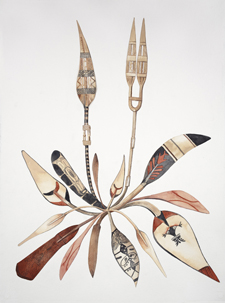 Sue Johnson, Paddling Brush, 2011, gouache, watercolor, and pencil on paper (artwork © Sue Johnson; photograph by Malcolm Osman/PRM)
Sue Johnson, Paddling Brush, 2011, gouache, watercolor, and pencil on paper (artwork © Sue Johnson; photograph by Malcolm Osman/PRM)
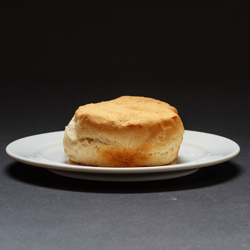 Peter Dueker, Untitled (#9), digital c-print, 10 x 10 in. (artwork © Peter Dueker)
Peter Dueker, Untitled (#9), digital c-print, 10 x 10 in. (artwork © Peter Dueker)
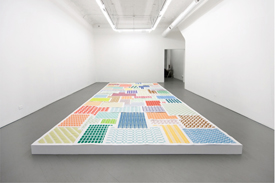 Michelle Grabner, Untitled, 2013 (artwork © Michelle Grabner; photograph provided by the artist and Shane Campbell Gallery, Chicago)
Michelle Grabner, Untitled, 2013 (artwork © Michelle Grabner; photograph provided by the artist and Shane Campbell Gallery, Chicago)
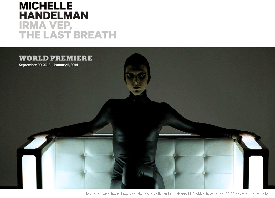 Michelle Handelman, Irma Vep, the last breath, 2013, 4-channel HD video installation, 33:00 min. (artwork © Michelle Handelman; photograph by Laure Leber)
Michelle Handelman, Irma Vep, the last breath, 2013, 4-channel HD video installation, 33:00 min. (artwork © Michelle Handelman; photograph by Laure Leber)

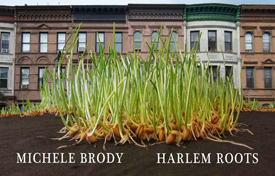 Invitation card for Michele Brody’s Harlem Roots
Invitation card for Michele Brody’s Harlem Roots
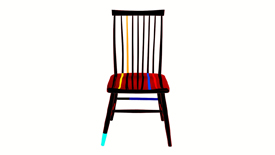 Sharon Louden, still from Community, 2013, digital animation, 2:35 min. (artwork © Sharon Louden)
Sharon Louden, still from Community, 2013, digital animation, 2:35 min. (artwork © Sharon Louden)
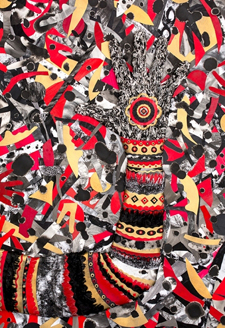 Michael Velliquette, Working Arm, 2013, paper, ink, acrylic, foam, and glue, 52 x 36 in. (artwork © Michael Velliquette)
Michael Velliquette, Working Arm, 2013, paper, ink, acrylic, foam, and glue, 52 x 36 in. (artwork © Michael Velliquette)
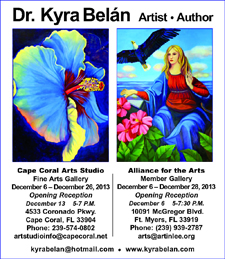 Invitation card for Kyra Bélan’s exhibitions
Invitation card for Kyra Bélan’s exhibitions
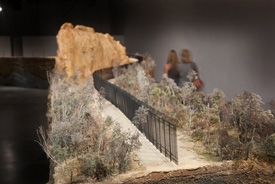 Blane De St. Croix, Broken Landscapes III, 2013 (artwork © Blane De St. Croix)
Blane De St. Croix, Broken Landscapes III, 2013 (artwork © Blane De St. Croix)
 Sue Johnson, Mod-style Hearth (left) and Picture Window Looking West, from the series Ready-Made Dream, 2013 (artworks © Sue Johnson)
Sue Johnson, Mod-style Hearth (left) and Picture Window Looking West, from the series Ready-Made Dream, 2013 (artworks © Sue Johnson)
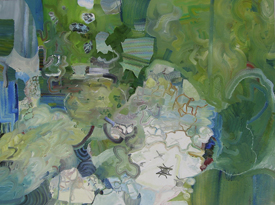 Josette Urso, Cloud Lily, 2013, oil on canvas, 24 x 30 in. (artwork © Josette Urso)
Josette Urso, Cloud Lily, 2013, oil on canvas, 24 x 30 in. (artwork © Josette Urso)
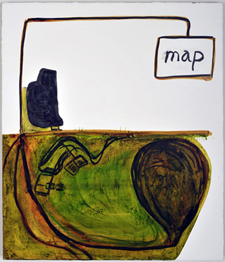 Mira Schor, Reversible Painting: Map, 2013, ink and oil on gesso on linen, 28 x 24 in. (artwork © Mira Schor)
Mira Schor, Reversible Painting: Map, 2013, ink and oil on gesso on linen, 28 x 24 in. (artwork © Mira Schor)

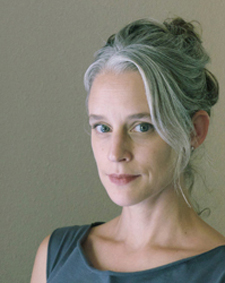 Anna Collette
Anna Collette
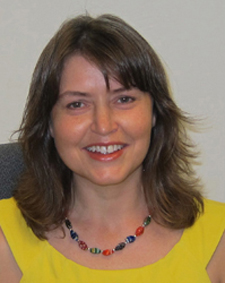 Carma Gorman
Carma Gorman
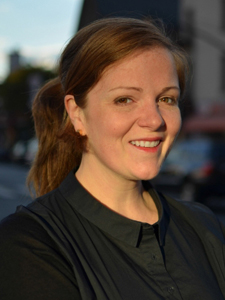 Cathleen Chaffee (photograph by James Sevigny)
Cathleen Chaffee (photograph by James Sevigny)
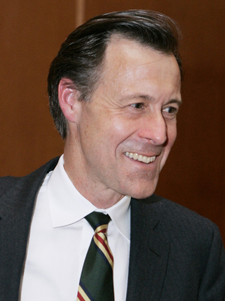 Karl Kusserow
Karl Kusserow
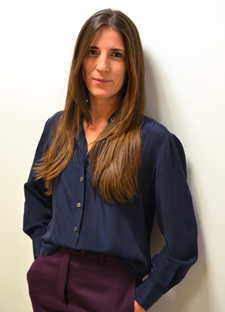 Kelly Taxter
Kelly Taxter
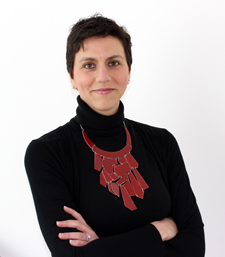 Mary M. Tinti
Mary M. Tinti